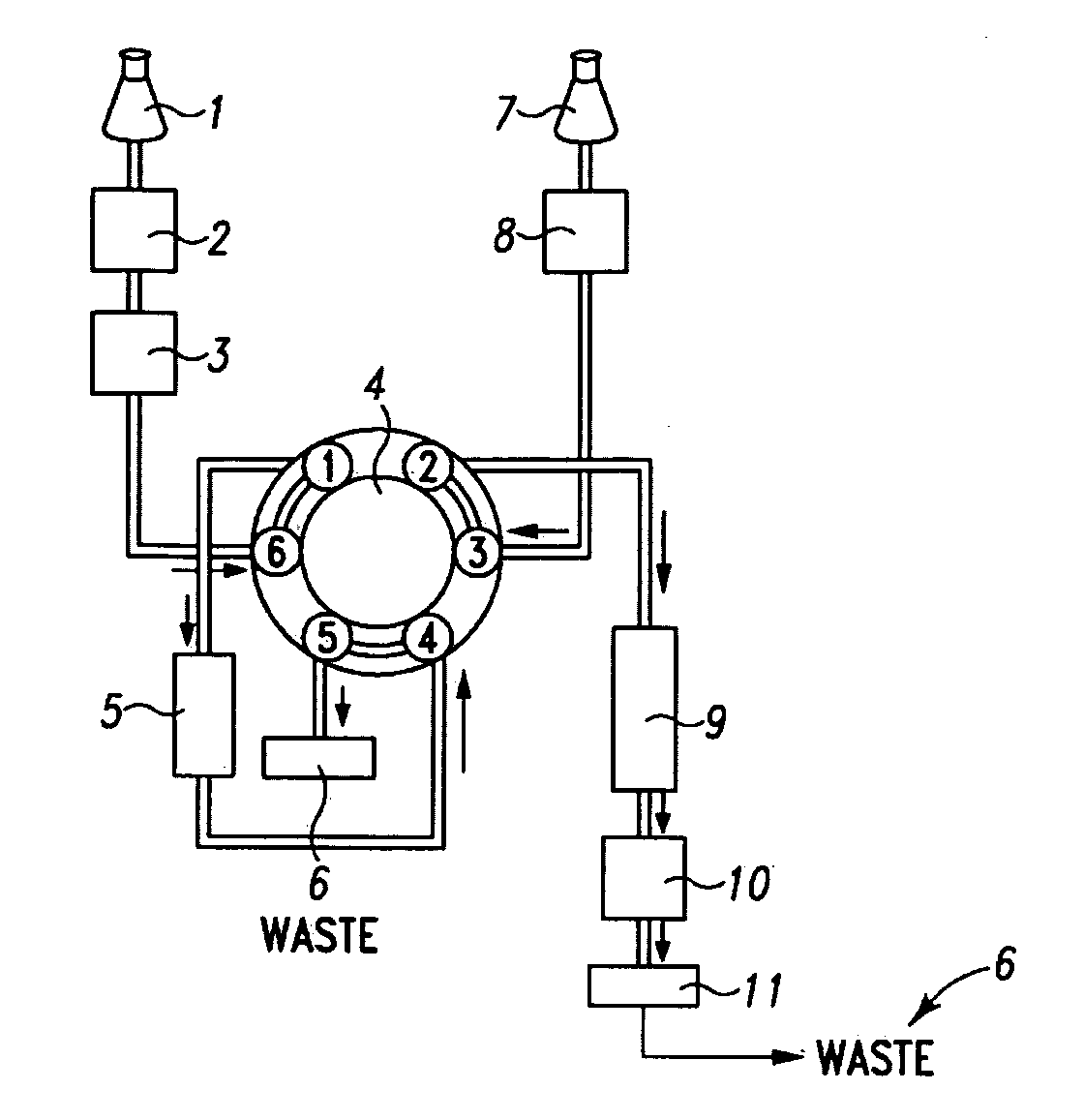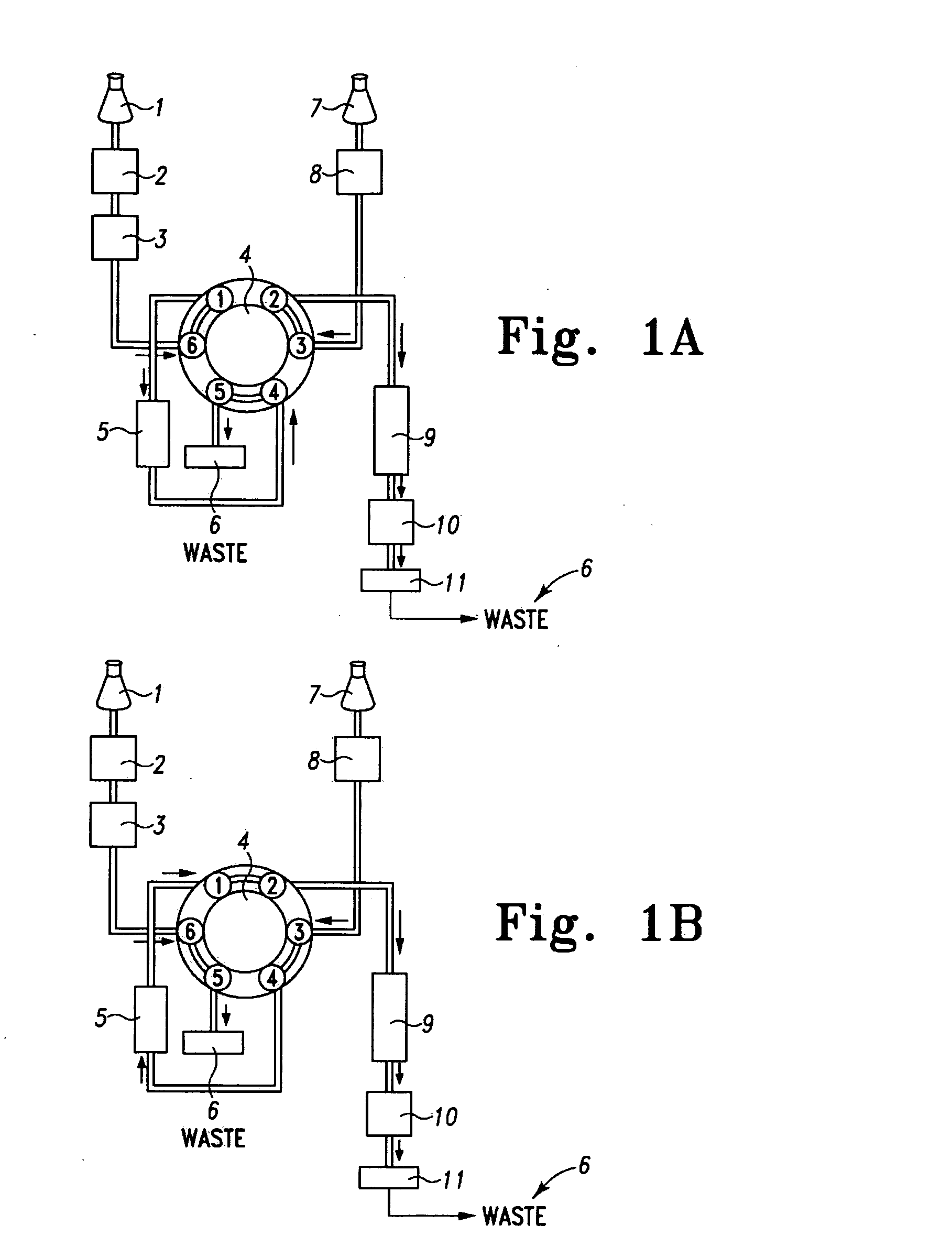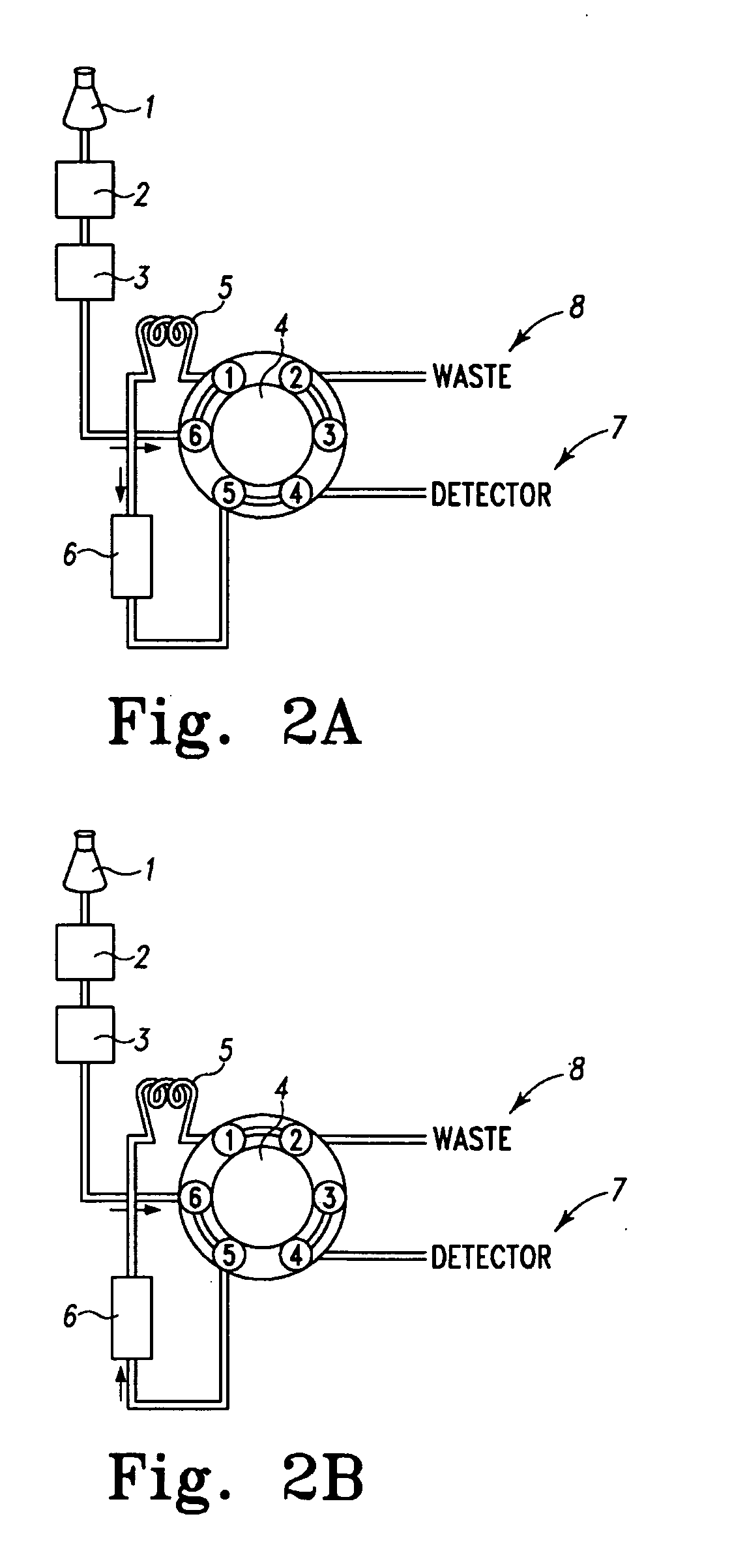Monolithic column chromatography
- Summary
- Abstract
- Description
- Claims
- Application Information
AI Technical Summary
Benefits of technology
Problems solved by technology
Method used
Image
Examples
example 1
[0105]A sample of serum was assayed for estradiol using a monolithic column for preparative chromatography followed by in-line analytical chromatography using a second column.
[0106]An HTLC system was used which comprised two LC pumps (quaternary pump or binary), two multiport valves, a monolithic C18 column (50×4.6 mm, mesopore 130 Å, macropore 2 μm, porosity >80%), an ether-linked phenyl phase column (100×2.0 mm, 80 Å, 4 μm), a 100 μL sample loop, and a mass spectrometer (“ms”). The system was configured as shown in FIG. 7A-C.
[0107]The first pump was connected to port 2 of the first multiport valve, the 100 μL sample loop was connected to ports 3 and 4, and the first column (the monolithic C18 column) was located between ports 1 and 5. The second multiport valve was connected, via port 3, to the first multiport valve at port 6. The second valve was further connected to the second column (the ether-linked phenyl phase column), which was further connected to a mass spectrometer (“MS”...
example 2
[0113]A sample of serum was assayed for estradiol using a single monolithic column for both preparative chromatography and analytical chromatography.
[0114]An HTLC system was used which comprised a quaternary pump, two multiport valves, a monolithic C18 column (50×4.6 mm, mesopore 130 Å, macropore 2 μm, porosity >80%), a 100 L sample loop, a 200 μL sample loop, and a mass spectrometer. The system was connected as in FIG. 4A-C. The quaternary pump (not shown) was connected to port 2 of the first multiport valve, the 100 μL sample loop was connected to ports 3 and 4, and the 200 μL sample loop was connected between port 5 and the column. The second multiport valve was connected, via port 3, to the first multiport valve at port 6. The second valve was further connected to a mass spectrometer (“MS”) via port 4 and a waste line via port 2.
[0115]The solvents used were as follows:[0116]Solvent A: 0.1% formic acid[0117]Solvent B: 100% methanol
[0118]A sample of serum was diluted in solvent A....
PUM
| Property | Measurement | Unit |
|---|---|---|
| Mass | aaaaa | aaaaa |
| Mass | aaaaa | aaaaa |
| Mass | aaaaa | aaaaa |
Abstract
Description
Claims
Application Information
 Login to View More
Login to View More - Generate Ideas
- Intellectual Property
- Life Sciences
- Materials
- Tech Scout
- Unparalleled Data Quality
- Higher Quality Content
- 60% Fewer Hallucinations
Browse by: Latest US Patents, China's latest patents, Technical Efficacy Thesaurus, Application Domain, Technology Topic, Popular Technical Reports.
© 2025 PatSnap. All rights reserved.Legal|Privacy policy|Modern Slavery Act Transparency Statement|Sitemap|About US| Contact US: help@patsnap.com



